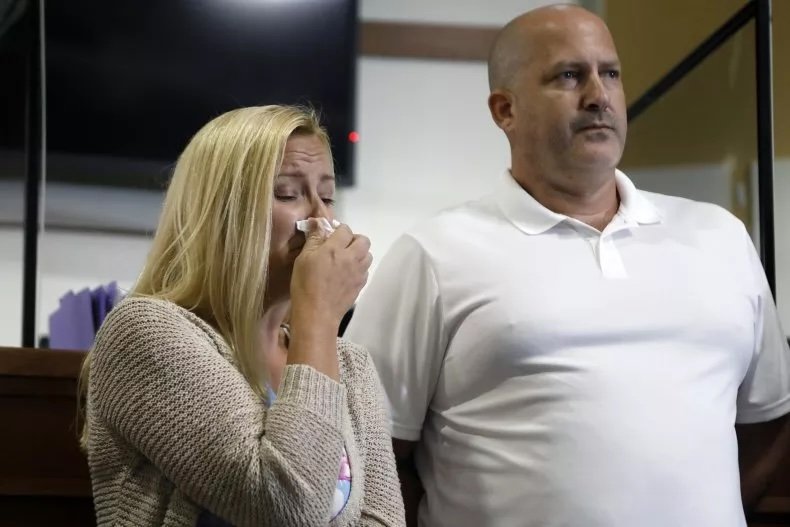Whispers in the Dark: The Bedroom Strangler
/Content Warning: This post includes references to sexual assault and murder
It took four years for Russel Maurice Johnson, aka the Bedroom Strangler, to be arrested for the multiple rapes and the murders of seven women. At first glance, it seemed as though the first few victims died of natural causes. After the murder of Diane Beitz, who was strangled and raped on New Year’s Eve of 1974, the police started to suspect murder. Even at that time, they had no idea they had a serial killer on their hands. It wasn’t until the murder of Louella George in 1977 that police realized just how dire the situation was.
Early Life
According to an interview by Mary O’Connell of CBC, Johnson’s childhood was rough. He was born in St. Thomas, Ontario. His parents were deeply religious, and money was tight. His father didn’t let their family celebrate Christmas. As early as 13, Johnson started stealing women’s underwear. He did not graduate high school. He started work as a mechanic at Ford in Talbotville. By 1969, he began breaking into women’s homes to steal underwear, eventually graduating to rape, which then escalated to a string of murders from 1973 to 1977.
Early Victims
As far as we’re aware, Johnson’s first victim was 20-year-old Mary Hicks on October 19th, 1973. Initially, she was thought to have died from an allergic reaction, which is part of what hindered the investigation into Johnson. She had no obvious injuries. There isn’t much information on the following victims. The specific dates and order aren’t known.
Alice Ralston’s death was wrongly attributed to “hardened arteries.”
In March of 1974, Eleanor Heartwick was also thought to have died from an allergic reaction to prescription drugs.
Doris Brown, who was 49 when she died, was thought to have died from pulmonary edema.
According to the interview with CBC, Johnson took great care staging these early murders to avoid suspicion. He must've gotten sloppy as time passed and he still wasn’t caught.
Diane Beitz
It was Diane Beitz’s case in Guelph, Ontario, that finally sparked a murder investigation. On December 31st, 1974, she was found by her fiancée with a pantyhose tied around her neck. The autopsy found that she had been assaulted postmortem. Even though this was the first case where murder was suspected, it took three years for the case to be solved. At this point, police didn’t suspect a serial killer.
Louella George
In April of 1977, Johnson broke into a fourth-floor apartment. He strangled and raped Louella George before killing her. According to the National Post, he made her bed afterwards. Police finally realized that there was a serial killer on the loose. The media nicknamed him “The Bedroom Strangler”.
Donna Veldboom
Donna Veldboom was the final victim before Johnson was caught. She was found strangled and stabbed in her own apartment. She lived in the apartment above Johnson. Police found this to be a pattern. Johnson had allegedly lived in the same apartment building as Louella George and one of his ex-girlfriends lived in the same building as Diane Beitz. Johnson was caught shortly after.
Arrest and Trial
Johnson quickly confessed to Veldboom, Beitz and George’s murder, as well as Ralston, Hartwick, Hicks and Brown. The crime scenes of the latter three victims were so meticulously cleaned that police had no idea they were murdered. According to Guelph Today, while imprisoned, he confessed to seven more murders and 17 assaults.
Police Inspector Robert Young stated that Johnson said: “If he had received proper medical treatment, this wouldn’t have happened.” Apparently, during a voluntary stay at a psychiatric hospital, Johnson was diagnosed as a “sexual deviant.” Nowadays, he would be diagnosed with antisocial personality disorder.
Johnson was found not guilty by reason of insanity. He was sentenced to life at the Waypoint Centre for Mental Health Care, where he still resides today.
Aftermath
Despite his arrest and imprisonment, the family of Johnson’s victims still fear that he might be released. Every year, Johnson is entitled to a hearing regarding his release, movement to another facility, and special privileges to leave Waypoint’s grounds. Every year, the families attend the hearings and voice their protests.
Bill Veldboom fears that victims’ survivors are the last line of defence in cases such as these. Johnson’s lawyer argued that he was “too old” to pose a threat. Thankfully, Johnson’s doctor disagreed, saying he was physically and psychologically capable. Veldboom urges citizens to pay attention to the Ontario Review Board to prevent leniency toward inmates like Johnson and keep extremely violent offenders off the streets.
Shannon Brownell is a student in the Professional Writing program at Algonquin College who lives in Ottawa, Ontario. She’s originally from Calgary, Alberta, and has her horticulture technician certification. She loves horror movies and writing about anything spooky. Her favourite horror movies are Scream, Midsommar, and The Others.












